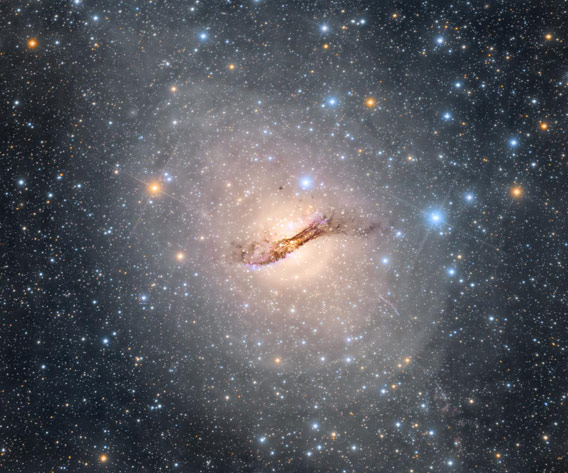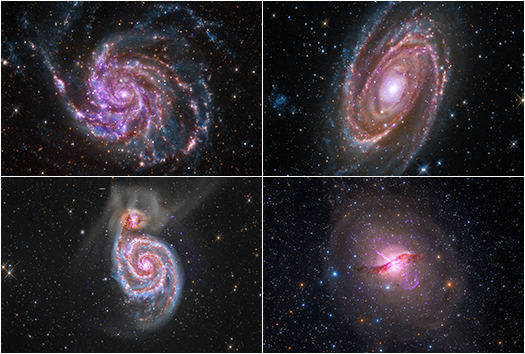Professional and Amateur Astronomers Join Forces
We are perhaps living in the midst of a new "Golden Age" of astronomy. In the four hundred years since Galileo first trained his refracting optical telescope on the Moon, and Jupiter and its moons, we've seen staggering advances in the technology of telescopes. We've also benefited from the discoveries of light beyond the visible portions of the electromagnetic spectrum and the development of instruments sensitive to those wavelengths.
NASA developed and implemented its Great Observatories program to extend our view of the Universe far beyond that which our human eyes can see, giving us glimpses of the cosmos beyond our ancestors' wildest dreams. Over the past two decades, advancements in professional-grade detectors, optics and computing power have been welcomed by amateur astronomers as well. With a modest investment and a great deal of patience, a dedicated amateur astronomer can produce images that rival those of professional ground-based observatories from just ten years ago. In the spirit of Global Astronomy Month 2014, we present four views of our cosmos brought to you by NASA and two very dedicated amateur astronomers, Detlef Hartmann and Rolf Olsen, in an Astro Pro-Am collaboration.
After I spoke at the NorthEast Astro Imaging Conference in 2013, I decided to further investigate the depth and quality of both professional and amateur data that is available to anyone willing to do a little digging. I chose this as an opportunity to help forge a relationship between amateur astrophotographers and NASA by identifying several high-quality images that would be ideal candidates for a multi-wavelength, professional-amateur (or “pro-am”) collaboration. This was also a great venue to raise interest and awareness among the amateur astronomer/astrophotographer community as to the wealth of data available in NASA's various mission archives. People are often surprised when they learn that data from NASA's Great Observatories program is free to use.
I sought out the work of talented astrophotographers on astrobin, which eventually led me to the work of Detlef Hartmann. I reached out to Detlef regarding a possible collaboration combining his excellent work with data from Chandra and possibly other NASA observatories. He was enthusiastic about the idea and so we got to work identifying potential image candidates, most of which had very good X-ray data from Chandra and infrared data from NASA's Spitzer Space Telescope available. Detlef utilizes his own remote observatory in the Austrian Alps, which affords him the ability to take very long exposures in very good seeing conditions thus producing stunning images. This is a common theme among amateur astrophotographers that sets them apart from the professional observatories that are often oversubscribed and for which it is difficult to devote large amounts of time to one research project; amateur astronomers have the luxury of time.

Centaurus A - Optical
It was by chance that I came across this blog post by "Bad Astronomer" Phil Plait detailing an amazing optical image of Cen A by Rolf Olsen. This extremely deep image of Cen A teases out the faintest details in the extended structure of this galaxy - all from a 10" telescope that Rolf built himself! In an effort to extend this Pro-Am collaboration to other astrophotographers, I contacted Rolf to see if he would be interested in working together on a multi-wavelength image of Cen-A and was met with the same enthusiastic response as Detlef's. We iterated a few times on an image combining Rolf's amazing work with our newly updated, deeper X-ray image, and again infrared data from Spitzer. Cen A is famous for its bright X-ray jet, but if you look very closely at Rolf's image, he also managed to capture faint evidence of that same jet in optical wavelengths as well.
This image release is hopefully the beginning of a fruitful collaboration with amateur astronomers around the world. We hope to release more images in the future. In the meantime, enjoy these four images and keep looking up!
-Joe DePasquale, Chandra Science Imager
Category:
- Log in to post comments

